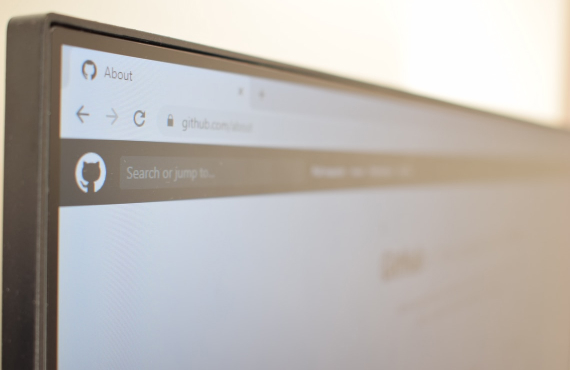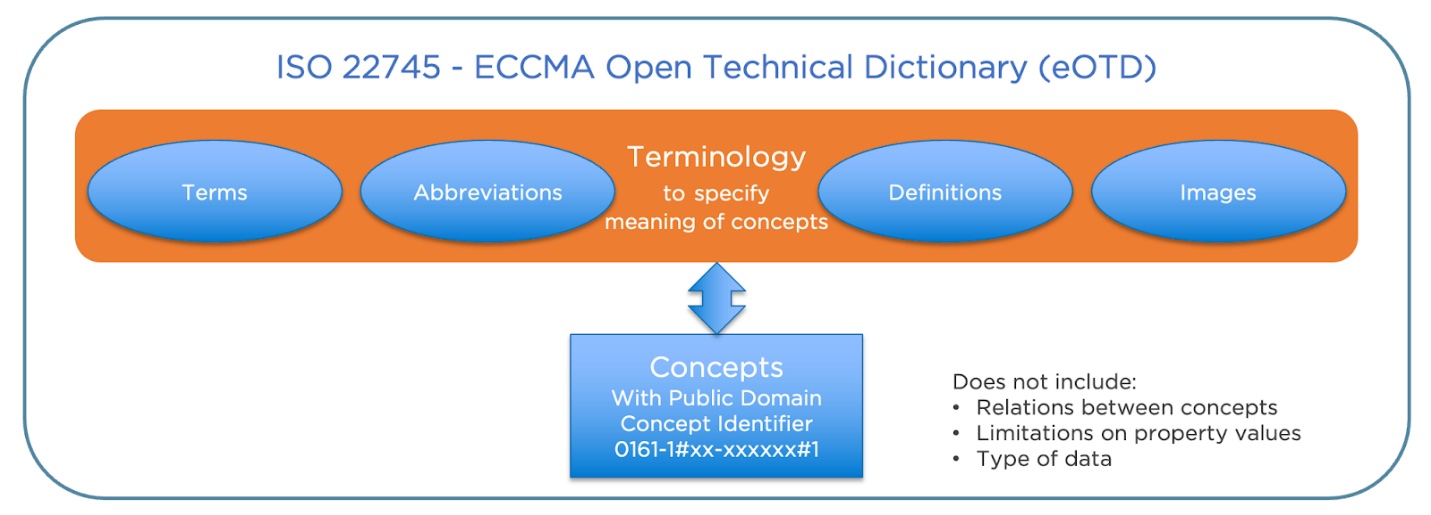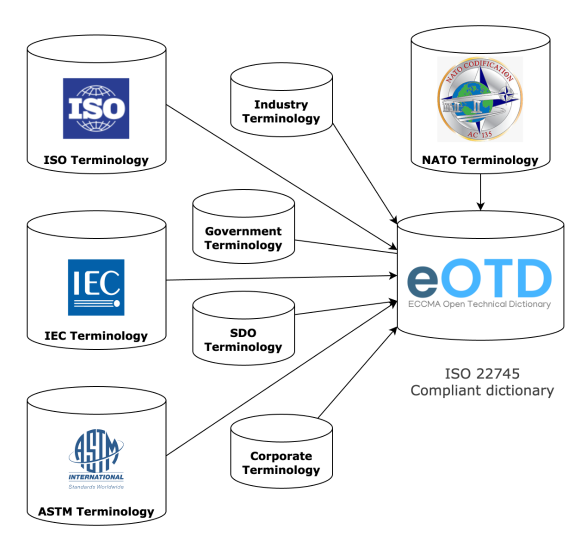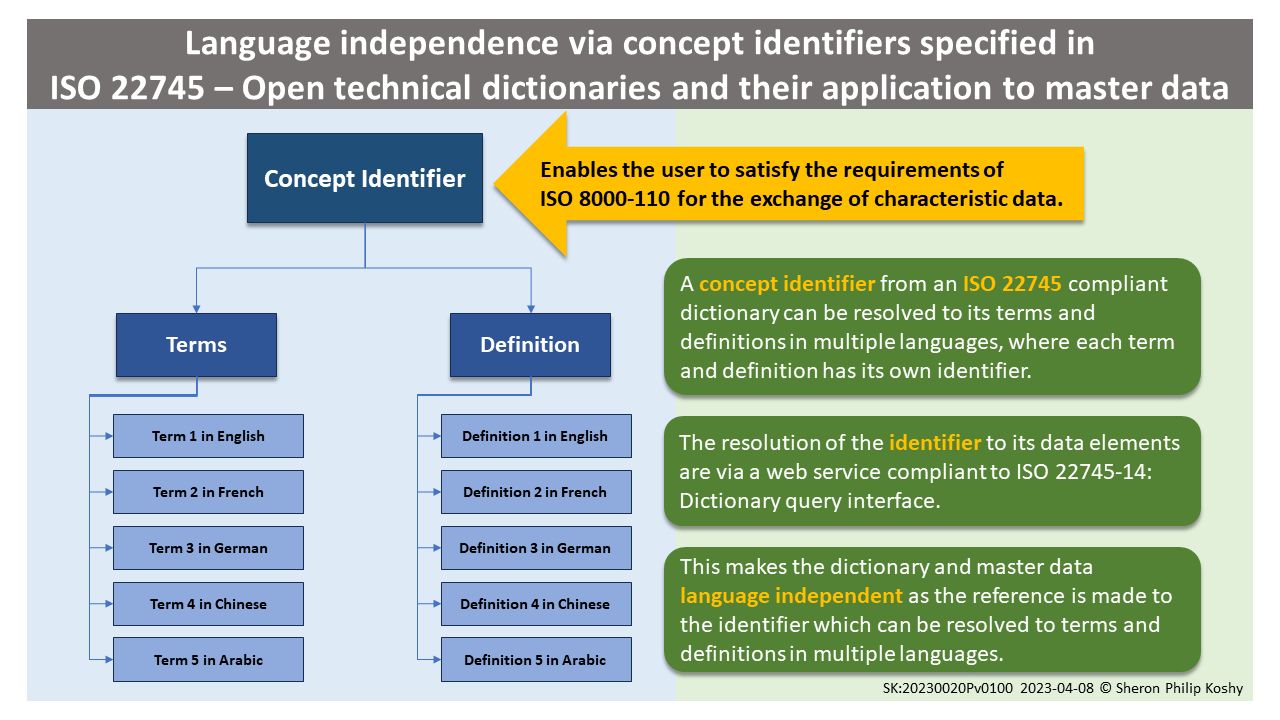
eOTD ECCMA Open Technical Dictionary
The eOTD is an ISO 22745 compliant dictionary managed by ECCMA, it is an open technical dictionary of cataloging concepts used to create unambiguous language independent descriptions of individuals, organizations, locations, goods and services.

What is an Open Technical Dictionary?
An Open Technical Dictionary (OTD) is a collection of terms and definitions that are grouped by concept. OTDs are used to provide a common language for understanding and exchanging data across an organization. This can lead to improved data quality, better decision-making, and increased trust in data-driven processes.
OTDs based on ISO 22745 are compliant with the international standard for open technical dictionaries. This ensures that they are consistent and reliable, and that they can be used to exchange data with other organizations.
The ISO 22745 standard specifies a system for descriptive technology and includes parts related to the dictionary. It also provides guidelines for the development and maintenance of OTDs.
The importance of terminology is now being widely recognized. In the development of the ISO standard model for Open Technical Dictionaries, it was recognized that terms are often poor labels for concepts. This is because terms can have different meanings in different contexts.
The ISO 22745 standard addresses this issue by using concept identifiers to link terms to their corresponding concepts. This ensures that the meaning of a term is always clear, regardless of the context in which it is used.
In conclusion, OTDs based on ISO 22745 are a valuable tool for organizations that need to exchange data with other organizations. They can help to improve data quality, better decision-making, and increase trust in data-driven processes.

History of ISO 22745
ISO 22745 was created in response to a need for a commercial analog to the NATO Codification System (NCS). The NCS is a military standard for cataloging parts and materials. It was developed by NATO in the 1950s, and it is still in use today. However, the NCS is not well-suited for commercial use, it is complex and difficult to maintain.
In the early 2000s, the US Defense Logistics Agency (DLA) and NATO Allied Committee 135 (AC/135) began looking for a commercial analog to the NCS. They wanted to create a standard that would allow for seamless data exchange between government and industry. They partnered with ISO Technical Committee 184, Subcommittee 4 (SC4), which is responsible for all standards related to industrial data. ECCMA, an international not-for-profit membership association, also joined the project.
These parties worked together to develop ISO 22745. The standard was published in 2010. It is an international standard for the exchange of characteristic data. It is based on the NCS, but it has been simplified and made more compatible with international standards.
ISO 22745 was created with the following purposes in mind:
- To leverage the NCS and create a commercial standard that could be implemented by industry
- To improve the quality and availability of data
- To increase cooperation with industry

What is eOTD?
eOTD stands for ECCMA Open Technical Dictionary. It is an ISO 22745 compliant dictionary managed by ECCMA. eOTD is an open technical dictionary of cataloging concepts that can be used to create unambiguous language-independent descriptions of individuals, organizations, locations, goods, and services.
eOTD is a valuable tool for organizations that need to exchange data with other organizations. It can help to improve data quality, better decision-making, and increase trust in data-driven processes.
Here are some of the key features of eOTD:
- It is based on the ISO 22745 standard, which ensures that it is consistent and reliable.
- It is open and extensible, which means that it can be customized to meet the specific needs of any organization.
- It is maintained by a team of experts, which ensures that it is up-to-date and accurate.

What does the eOTD contain?
eOTD is a comprehensive dictionary of terms, definitions, and images for describing individuals, organizations, locations, goods, and services. It includes terminology that has been defined by NATO and consensus bodies such as ISO and IEC.
eOTD has around 2,000,000 records.
eOTD includes Terminology Referenced in a Standard Model.
- Public domain concept identifiers.
- Free identifier resolution to underlying terminology (web services).
- Hyperlink to source standards.
- Multilingual.
- Multiple terms, definitions and images linked to single concept identifier.

What is a concept identifier?
A concept identifier is a unique code or identifier assigned to a specific concept or term in an ISO 22745 compliant dictionary. Concept identifiers are used to link terms, definitions, and images to their corresponding concepts. This makes it easy to find the information you need in the dictionary, regardless of the language or format in which it is expressed.
Concept identifiers can also be used to resolve terms and definitions in multiple languages. This is done through a web service compliant to ISO 22745-14: Dictionary query interface.
Here is an example of how concept identifiers can be used. Let’s say you want to find the definition of the term “screwdriver” in the English language. You can use the concept identifier for “screwdriver” to query the dictionary. The dictionary will return the definition of “screwdriver” in English, as well as the definitions of “screwdriver” in other languages.
Concept identifiers are a valuable tool for anyone who needs to work with data in multiple languages. They can help to ensure that data is interpreted correctly and that communication is clear.
The concept identifier from an ISO 22745 compliant dictionary can be resolved to its terms and definitions in multiple languages via a web service compliant to ISO 22745-14: Dictionary query interface.

How can my organization use eOTD?
eOTD can be used by organizations in a variety of ways, including:
- Improving data quality: eOTD can help to improve the quality of data by providing a common language for describing data elements. This can help to reduce errors and inconsistencies in data, and it can make it easier to understand and use data.
- Enhancing communication: eOTD can help to enhance communication within and between organizations by providing a common language for understanding and interpreting information. This can help to improve collaboration and decision-making.
- Automating processes: eOTD can be used to automate processes by providing a common language for exchanging data between systems. This can help to improve efficiency and reduce costs.
- Meeting compliance requirements: eOTD can be used to meet compliance requirements by providing a common language for describing data elements. This can help organizations to demonstrate compliance with regulations, such as those related to quality management and data protection.
Here are some specific examples of how organizations can use eOTD:
- A manufacturing company can use eOTD to improve the quality of its product data by ensuring that all employees are using the same terminology to describe products. This can help to reduce errors in manufacturing and assembly, and it can make it easier to track products throughout the supply chain.
- A financial services company can use eOTD to enhance communication between its sales, trading, and risk management teams by providing a common language for describing financial products. This can help to improve collaboration and decision-making, and it can reduce the risk of errors.
- A government agency can use eOTD to automate the process of exchanging data with other government agencies by providing a common language for describing data elements. This can help to improve efficiency and reduce costs.
Overall, eOTD is a valuable tool that can help organizations to improve the quality of their data, enhance communication, automate processes, and meet compliance requirements.
What is a Corporate Dictionary
A corporate dictionary is a comprehensive collection of terms and their definitions that are used in an organization’s master data and transaction data. It is derived from a subset of ECCMA’s Open Technical Dictionary (eOTD).
A corporate dictionary serves as a repository of information about data elements that are used or captured in databases, information systems, or research projects. It facilitates a clear understanding of the meaning and purpose of these data elements within specific processes or projects, providing valuable guidance on interpretation, accepted meanings, and representation.
Corporate dictionaries can be used to improve the quality of data, enhance communication, automate processes, and meet compliance requirements.
If you are looking for a way to improve the quality of your data, enhance communication, automate processes, and meet compliance requirements, then a corporate dictionary is a valuable tool to consider.
Do you want to use an open technical dictionary as the basis of your master data?
eOTD ECCMA Open Technical Dictionary.- Based on ISO 22745.
- Open.
- Concept dictionary.
- Multi-language.
